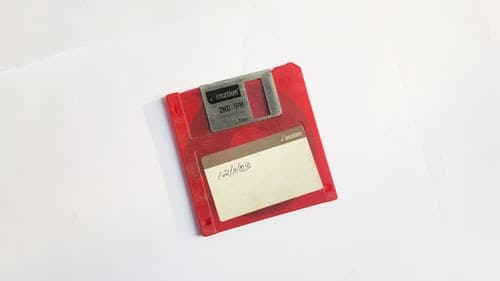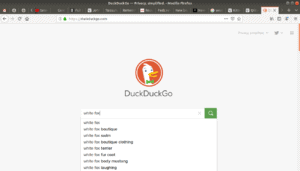Introduction
In this module we will be introduced to the World Wide Web:
- what it is,
- how to access it,
- how to navigate it,
- how to protect ourselves online, and
- some common ways to connect with others online.
What is the Internet?
The World Wide Web is part of the Internet, therefore to understand the Web, it helps to understand a bit about the Internet as well.
The first thing to know about the Internet is that it’s a big thing. It’s so big that it means different things to different people. Let’s explore a few of these different views before we explore what the Web is.
The Internet and Memory
The Internet can be thought of as Society’s Memory. Let’s talk about some different ways to remember.
How do you remember something? For me, when I hear something I want to remember, I say it out loud four or five times so it sticks better in my mind. I try to memorize as many things as I can this way, such as names or addresses. I have met other Inuit who use this method, and they only have to say it two or three times before they remember. Since my memory is not as strong as theirs, I have found other ways to extend my memory.

To explain this, you need to know a bit about me first: at the moment I am an urban Inuk, living in Edmonton, Alberta. My parents are Inuvialuit from Aklavik, and although I was raised in the south, my parents taught me many Inuit things. For example, that it’s good to serve and help whenever possible. And also more personal things, such as how everything around us has a flow, and being able to read these flows helps us to avoid interfering with the inner ways of others.
Since my memory is not as strong as others, I sometimes use these flows to remember more things than I could alone. For example, I work as a cook in a kitchen, a job for which I have to remember many things. When I’m cooking it’s easy to forget things, but the kitchen has its own flow, and so if I put a spoon or bowl in an odd place out of the natural flow (but not in the way of others), it reminds me: “I have to make that dish next while I’m waiting for this meat to cook!”
Anyway, this is my way of remembering. What’s yours?
The Internet is our memory beyond what we can remember, even beyond tricks like the one I explained above. We record our names, addresses, photographs, and other life memories on the Internet. Unlike with paper books and photographs though, the Internet is a living technology. It is like the weather: it has a shape and takes form, but is frequently changing. We’ll talk more about this later.
Computers and the Internet
Computers are interesting things. This is my personal view, which comes from mimicking and observing different flows; I find computers interesting because they also mimic many different flows. Electricity runs through the computer, back and forth between the screen, the touch pad, the mouse, the keyboard, and all the other hardware of which it is made. These flows also zip back and forth between different computers, which makes things even more interesting and fun.
The flows between computers happen because most of the computers we use in our daily lives—such as laptops, smartphones, or car navigation systems—are connected to the Internet which allows them to talk to each other. Without going into detail, each computer has an address, and they use these addresses to connect and communicate with each other.
The Internet and Culture
One of my favorite writers is Rachel Qitsualik. I especially enjoy the opinion columns from Nunatsiaq News she wrote during the ’90s. This is one of my favorite passages:
“I have read too many interpretations of “Inuit” as meaning “humans,” probably under the (incorrect) assumption that every culture’s name for itself must mean such a thing.
However, as a long-time translator, I can guarantee you that “Inuit” is a specific term. It means, “The Living Ones Who Are Here.” It denotes a sense of place, of having arrived, a memory that Inuit knew they had kin somewhere else. Thus we see how language acts as a code to preserve heritage.”
Another way to think of the Internet is that, like the word Inuit, it offers us memories and reminders that we have kin elsewhere. It’s only a matter of knowing how to connect with them.
The Internet and Privacy
Privacy on the Internet is important because, not only is the Internet a place of memories, it is a place of private memories. When we put things such as our vacation photos, or personal messages or mail online, we want to be sure that only those intended can and should see them.
Growing up, my mother taught me to value privacy in a very Inuit way: if you overheard something that was meant to be private, you absolutely would not share or repeat it. This was to offer the speaker dignity and respect. That’s what privacy meant to her, and that’s what it means to me. Living among Southerners, I have learned that others value their privacy just as much, but often take different approaches to keep it. Therefore we will explore different ideas of privacy as we learn how to use the Internet.
Source: Rachel Qitsualik, Esquimaux (June 27th, 2003), Nunatsiaq News.
Using the Web
It is time to start learning how to use the World Wide Web.
We will learn four main applications:
- Web Browser: the main tool for accessing the Web.
- Search Engines: maps of the Web.
- Email: electronic mail; an alternative to traditional, physical mail.
- Wi-Fi: one of the most common ways people connect to the Web.
Each of these Internet tools or applications have many specific words related to them. These will be highlighted in bold, making them easier to reference at a later point.
- Web Browsers
- Browser Privacy
- Search Engines
- Search Privacy
- Email Privacy and Safety
- Wi-Fi
- Online Libraries



